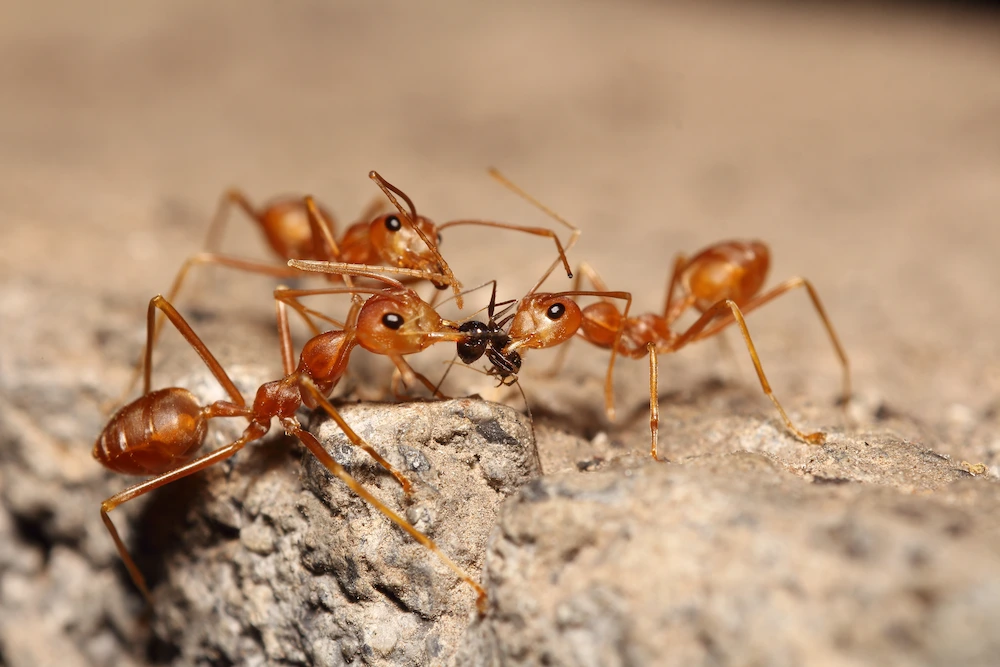Summary: Spring is in full swing, which means fire ant season is officially here. This blog dives into the busy lives of the most infamous pests in Texas. It acts as a guide to everything fire ants, from their life cycles to their diets to their stings. Romney Pest Control provides lasting fire ant solutions that protect Texas homes.
Spiders and mosquitoes are definitely annoying, but another southern pest gives these critters a run for their money. Fire ants are a constantly concerning presence in local yards and grassy spaces. In fact, Texas homeowners spend millions of dollars annually on fire ant management!
To know these pests is to defeat them. In other words, when you know the life cycle and habits of fire ants, you can eliminate them. Their colonies function a lot like other ant colonies, so it’s easy to pick up on their daily activities. Let’s dive into the lives of the angriest ants in Texas!
The Fire Ant Life Cycle
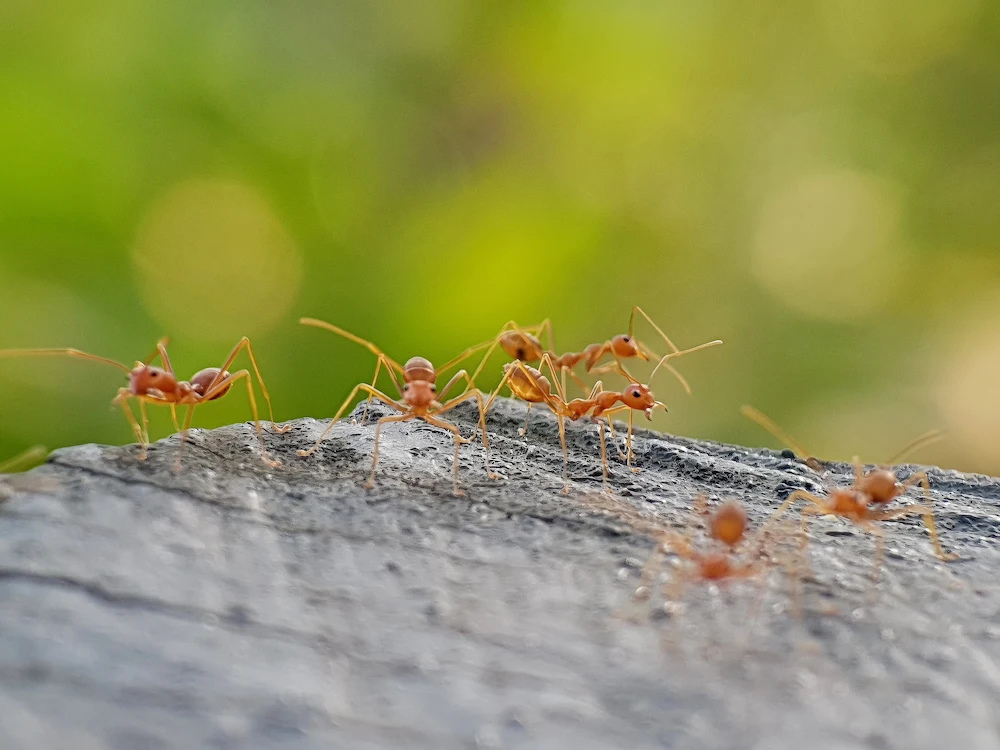
After the fire ant soon-to-be-queen mates, she selects a nesting site and produces a cluster of a dozen eggs. She cares for the hatched larvae until they become adults, then the new workers take over the queen’s duties so she can focus on producing more eggs. Fire ants take about a month to grow from eggs to adults, so the colony grows at an alarming rate.
Speaking of which, fire ant queens can lay over 1,000 eggs a day when the colony is thriving! Workers live for 5 weeks or more, while queens live for at least 7 years. There can also be multiple queens in one colony, which increases the egg production by a good amount.
Fire ant swarmers (reproductive males and females) usually go on their mating flights in spring and fall, but they can reproduce in any season in the right conditions. That’s why fire ant prevention is an important endeavor year-round.
Class in Session
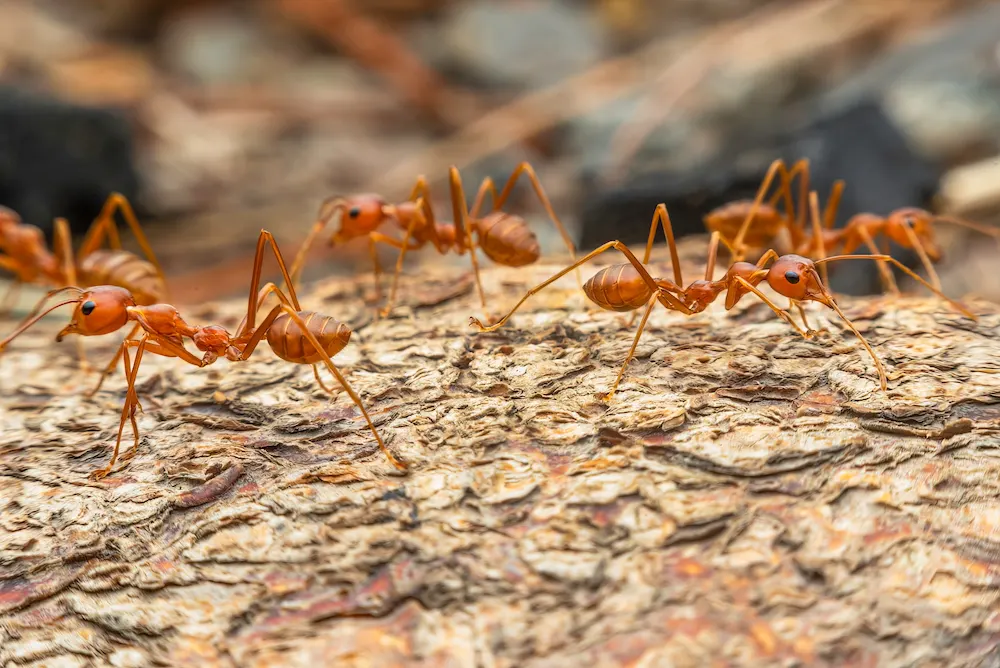
Like other eusocial insects (wasps, bees, etc.), fire ant colonies are divided into different classes. Each class has its own responsibilities to protect the colony’s numbers and nest.
The 3 classes in fire ant colonies are:
- Workers — Worker ants are the backbone of their colonies. This is the largest class since it handles the majority of the group’s tasks. Workers are sterile females that clean the nest, assist the queen, protect the colony, care for the young, and forage for food.
- Alates — This specialized class is capable of reproducing. Alates are winged, fertile male and female fire ants. After they mate, these pests go their separate ways — literally. Female ants start a nest and lay eggs, while male ants die shortly after mating.
- Queens — Once the colony is established, queen ants are the only reproductives in the group. The only task of this small class is to constantly produce eggs, as the workers handle the rest. Queens use pheromones (scent chemicals) to communicate with their colony.
Home Sweet Home
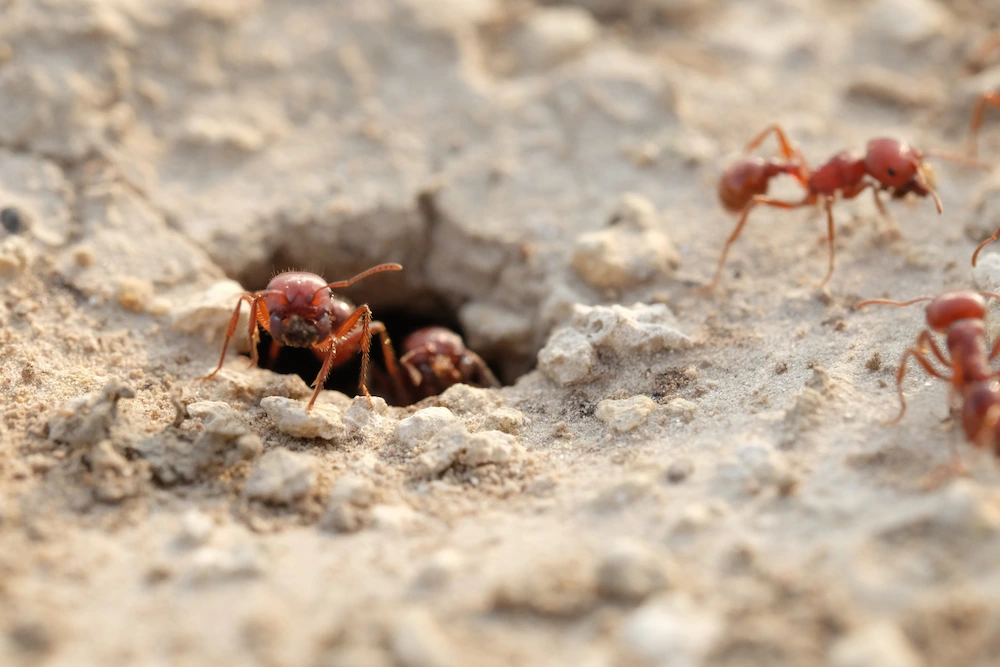
It’s no secret that fire ants love the heat. Although they’re more active in warm weather, these ants are able to survive in a variety of conditions. Their underground nests are temperature controlled because of the compacted dirt.
That’s not to say that fire ants aren’t impacted by the weather. They form their nests into flat patches of dirt when the area is in a drought. When there’s a lot of rain, the ants adapt by making their nests into big mounds to keep their colony above the flood of water.
On average, fire ant nests are about 2 feet wide and 18 inches tall. That’s not even counting the underground tunnels that the ants create to travel without detection. When the original nest is overpopulated, a queen ant and a handful of workers will create new nests close to the original. This is how several backyards in a neighborhood can be impacted by fire ants.
An Ant’s Favorite Food
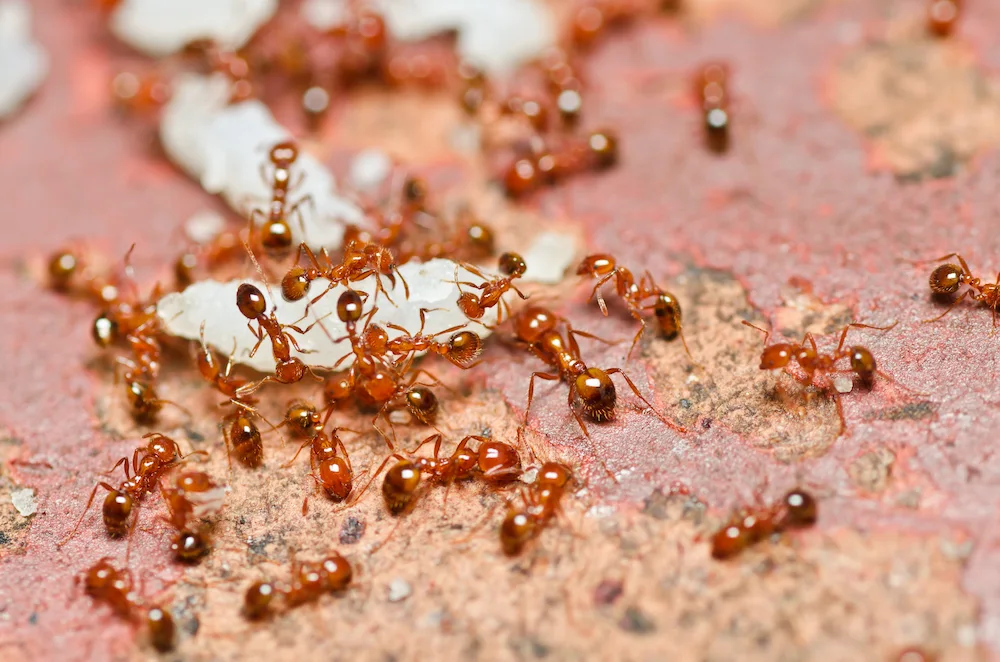
Fire ants travel both above ground and underground to find food. While they love fatty foods, fire ants are omnivores that eat a variety of things. They enjoy insects, plant material, seeds, and dead animals (gross!).
An interesting fact to note is that adult fire ants can only consume liquids. Workers store liquid food in their stomachs, then feed it to the queen and her young. Older larvae can have solids, so they can chew it into a liquid that they then give to the other fire ants. Teamwork!
The Trouble with Fire Ants
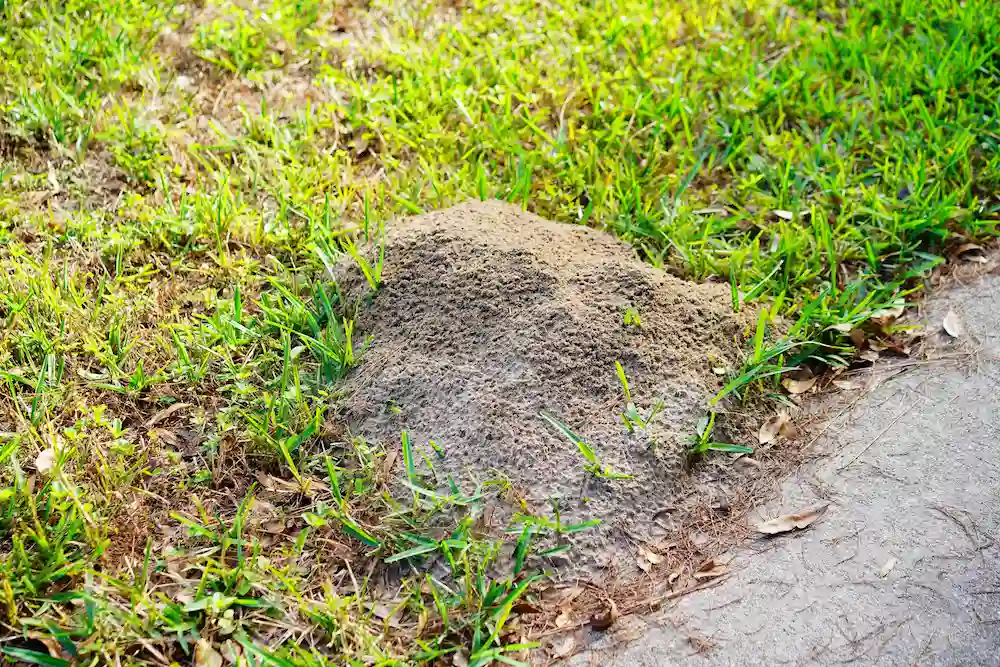
There’s a reason why fire ants are such a dreaded pest in Texas. Actually, there are a few reasons.
For one, colonies can have anywhere from 100,000 to 500,000 workers. Fire ant colonies develop faster when there aren’t other ants nearby. The ants will only continue to build nests as their numbers grow. This can even lead them indoors if they find an entry point into a nearby house. Talk about being too close for comfort!
The main issue with fire ants is their defense strategies. When threatened, the worker will first bite the “enemy” with its strong jaws. As it holds the bite, the ant delivers a painful sting by swinging its stinger into the victim’s skin. Their stings are painful, but they aren’t typically fatal.
However, there are cases where people experience anaphylaxis when they’re stung by fire ants. Please seek medical attention if you have symptoms after being stung by fire ants.
A Note on Boiling Water
On that note, a word of caution on a popular way to kill fire ants. Many online forums recommend pouring a pot of boiling water into a fire ant nest to eliminate the pests. There are some major risks that come with this tactic:
- The water may not reach the queen since she is hidden deep within the nest. For fire ant elimination to be fully effective, it needs to impact the queens so there aren’t more eggs.
- Boiling water can kill grass and plants. It is possible for greenery to recover, but it will take time for the impacted grass and plants to grow again.
- Fire ants can move from their flooded nest and create a new home elsewhere. If you pour water into a nest, the surviving ants can just walk to a new spot and start over.
- Boiling water can severely burn your skin if it spills over the side of the container on your way outside. If you do try this method, please be careful when handling boiling water.
All of that being said, boiling water is not the best way to eliminate fire ants. There are other products, services, and DIY methods that are more effective — and safer for you.
How to Prevent Texas’ Worst Ants

There’s no denying that fire ants are a major problem in our state. The need for fire ant management is constantly high, hence the millions of dollars spent annually that we mentioned earlier. That’s why we want to give you some easy ways to prevent fire ants from infesting your yard this year.
The efficient ways to cut down on the number of fire ants are:
- Seal Entry Points — Fire ants outside are already bad, but inside? That’s a nightmare! Check your house’s exterior for new cracks and gaps, and seal openings with waterproof caulk.
- Consider Beneficial Nematodes — This is another popular DIY treatment, but it’s less concerning than boiling water. These nematodes don’t harm plants or animals and are available at most hardware stores.
- Keep the Yard Tidy — A messy yard hides a fire ant invasion very easily. Mow the grass, trim back plants, and pull weeds on a regular basis.
- Use Fire Ant Prevention Early — No matter which fire ant prevention methods you use, we recommend starting them early. Don’t wait for fire ant season to start preventing them!
- Contact Professional Pest Control — Whether you need reliable prevention or efficient solutions, professional technicians will help with all of your fire ant needs.
Fire Ants Are No Match for Romney
It’s the same story every year: fire ant queens lay thousands of eggs, and every Texas homeowner hopes they don’t have to deal with these angry ants. The good news is that your local pest experts at Romney Pest Control provide high-quality pest solutions all year long!
We solve Texas pest problems with a combination of efficient treatments, exclusion work, and preventative measures. Our goal is to leave you with a pest-free home in between scheduled services. We eliminate the most stubborn of pests, including fire ants, stinging insects, spiders, rodents, and more.
Contact us today for a free quote on our reliable services!
Citations
Biology and ecology of fire ants. (n.d.). National Fire Ant Eradication Program. Retrieved April 2, 2025, from https://www.fireants.org.au/look/biology
Fire ant habitat — Life cycle and habits. (n.d.). Texas A&M AgriLife Extension: Texas Imported Fire Ant Research and Management Project. Retrieved April 2, 2025, from https://fireant.tamu.edu/learn/fire-ant-habitat/
Fire ant life cycle. (n.d.). Orkin. Retrieved April 2, 2025, from https://www.orkin.com/pests/ants/fire-ants/fire-ant-life-cycle
How to prevent fire ants. (n.d.). Terro. Retrieved April 2, 2025, from https://www.terro.com/articles/how-to-prevent-fire-ants?srsltid=AfmBOoq-m6ty8ZIqaaUCJH9UNLbC0DUxH44sME9Yxxmmg3wSmKCM77GI

